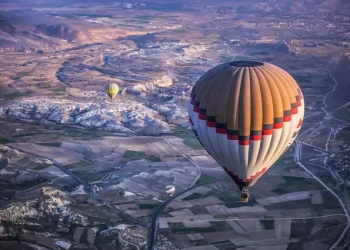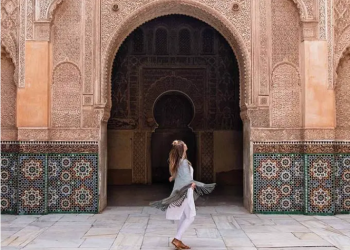Introduction
Skyscrapers have long captivated the imagination, symbolizing human ingenuity, technological advancement, and the desire to reach new heights. From towering glass facades to sleek steel structures, these architectural marvels dominate city skylines and serve as beacons of progress and innovation. In this article, we’ll embark on a virtual tour of some of the world’s tallest buildings, exploring their design, history, and cultural significance.
1. Burj Khalifa, Dubai
The Burj Khalifa in Dubai, United Arab Emirates, stands as a testament to human ambition and engineering prowess. Soaring to a height of 828 meters, it holds the title of the world’s tallest building. Designed by renowned architect Adrian Smith, the Burj Khalifa boasts a striking glass-and-steel facade inspired by Islamic architecture. Visitors can ascend to the observation decks on the 124th and 148th floors, where they can enjoy breathtaking panoramic views of the city and beyond.
2. Shanghai Tower, China
The Shanghai Tower in China is a marvel of modern architecture and sustainable design. Rising 632 meters above the bustling streets of Shanghai, it is the second-tallest building in the world. Designed by the architectural firm Gensler, the tower’s twisting form and double-skin facade help reduce wind resistance and improve energy efficiency. Visitors can experience the thrill of walking on the world’s highest observation deck or taking in the cityscape from the skywalk on the 118th floor.
3. Abraj Al-Bait Clock Tower, Saudi Arabia
The Abraj Al-Bait Clock Tower in Mecca, Saudi Arabia, is not only a towering symbol of Islamic architecture but also holds great religious significance for Muslims around the world. Standing at a height of 601 meters, it is the third-tallest building globally and serves as the focal point of the Mecca Royal Clock Tower Hotel complex. In addition to luxurious accommodations, the tower features a massive clock face adorned with Arabic calligraphy and illuminating the night sky during the holy month of Ramadan.
4. One World Trade Center, USA
One World Trade Center, also known as the Freedom Tower, stands as a poignant tribute to resilience and the spirit of New York City. Built on the site of the former World Trade Center, which was destroyed in the September 11, 2001, terrorist attacks, the tower rises 541 meters above Lower Manhattan. Visitors can pay their respects at the 9/11 Memorial and museum, which commemorate the lives lost and celebrate the strength and unity of the American people.
5. Taipei 101, Taiwan
Taipei 101 in Taiwan is a symbol of cultural pride and technological innovation. Standing at a height of 508 meters, it held the title of the world’s tallest building from 2004 to 2010. Designed to withstand typhoons and earthquakes, the tower’s unique pagoda-inspired design incorporates elements of traditional Feng Shui principles. Visitors can marvel at the world’s largest wind damper, suspended between the 87th and 92nd floors, which helps stabilize the building during high winds and seismic activity.
6. Petronas Twin Towers, Malaysia
The Petronas Twin Towers in Kuala Lumpur, Malaysia, are an iconic landmark and symbol of the city’s rapid development and modernization. Soaring to a height of 452 meters, they held the title of the world’s tallest buildings from 1998 to 2004. Linked by a skybridge on the 41st and 42nd floors, the towers house corporate offices, a concert hall, and the Suria KLCC mall, offering visitors a mix of shopping, dining, and entertainment options.
7. Lotte World Tower, South Korea
The Lotte World Tower in Seoul, South Korea, is a modern marvel and urban landmark. Standing at a height of 555 meters, it is the tallest building in South Korea and the fifth-tallest in the world. Visitors can ascend to the observation deck on the 123rd floor, known as Seoul Sky, for unparalleled views of the city and the surrounding landscape. The tower also houses luxury residences, a luxury hotel, and a retail mall, making it a one-stop destination for entertainment and leisure.
Conclusion
Iconic skyscrapers stand as symbols of human achievement and the relentless pursuit of progress. From the towering heights of the Burj Khalifa to the cultural symbolism of Taipei 101, each building tells a unique story of innovation, ambition, and cultural identity. As we continue to push the boundaries of architectural design and engineering, these towering structures will continue to inspire awe and admiration for generations to come.

FAQs After The Conclusion
1. How tall is the Burj Khalifa?
- The Burj Khalifa stands at a height of 828 meters, making it the tallest building in the world.
2. Is the Shanghai Tower earthquake-resistant?
- Yes, the Shanghai Tower is designed to withstand earthquakes and other natural disasters, thanks to its innovative structural design and advanced engineering techniques.
3. What is the significance of the Abraj Al-Bait Clock Tower?
- The Abraj Al-Bait Clock Tower holds great religious significance for Muslims, as it overlooks the Grand Mosque in Mecca and serves as a focal point for prayer and pilgrimage during the Hajj season.
4. Can visitors go to the top of One World Trade Center?
- Yes, visitors can ascend to the One World Observatory on the 102nd floor of One World Trade Center, where they can enjoy panoramic views of New York City and the surrounding area.
5. How many floors does Taipei 101 have?
- Taipei 101 has a total of 101 floors above ground, as well as 5 basement levels.
6. Are the Petronas Twin Towers identical?
- No, the Petronas Twin Towers are not identical. While they share a similar design, each tower has its own unique features and functions.
7. How many elevators are there in the Lotte World Tower?
- The Lotte World Tower has a total of 61 elevators, including double-decker elevators that travel at speeds of up to 10 meters per second.
8. Can visitors access the observation deck at Lotte World Tower?
- Yes, visitors can access the observation deck, known as Seoul Sky, on the 123rd floor of Lotte World Tower, where they can enjoy panoramic views of Seoul and the surrounding area.








